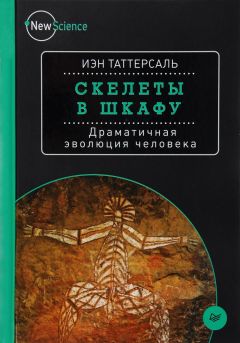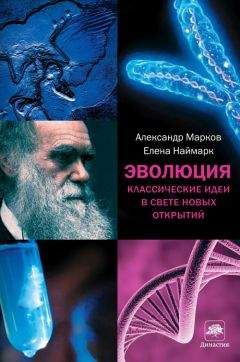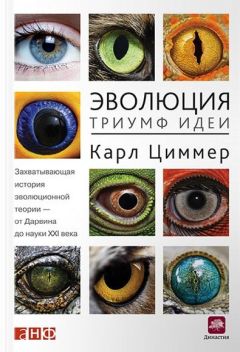Волшебная эволюция - Стестад Ханна Нюборг
История о перемещении королевских пингвинов:
Ann Kristin Balto/Norsk Polarinstitutt. Kongepingviner i Norge. http://www.polarhistorie.no/baltos_bilde/konge-pingivner-i-norge.
Lofotboka-01. Årbok for Lofoten, 23. årg. Pingvinene på Røst. S. 71–77. http://varoyrhs.com/lofotboka/pdf/lofotboka%202001.pdf.
Рассказ о биологии гигантского осьминога, его родительстве и старении основан на нескольких интернет-статьях и одной научной статье:
David Scheel. Giant Octopus: Fact Sheet. Alaska Pacific University. https://web.archive.org/web/20121115121756. http://marine.alaskapacific.edu/octopus/factsheet.html.
Jim Cosgrove (2012). No Mother Could Give More. BC Nature Winter. http://birchbaybuzz.files.wordpress.com/2013/04/no-mother-could-give-more.pdf.
Anderson R. A., Wood J. B., Byrne R. A. (2002). Octopus Senescence: The Beginning of the End. Journal of Applied Animal Welfare Science. 5(4). 275–283.
Бабушки, дедушки и долголетие:
Kirchengast S. (2017). Menopause Female Reproductive Senescence from the Viewpoint of Evolutionary Anthropology. A Multidisciplinary Look at Menopause. Intech Open.
Статья о пауке Toxeus magnus:
Chen Z., Corlett R. Т., Jiao X., Liu S. J., Charles-Dominique Т., Zhang S., Li H., Lai R., Long C., Ouan R. C. (2018). Prolonged milk provisioning in a jumping spider. Science. 362(6418). 1052–1055.
О матери-паучихе и ее паучатах:
Salomon М., Aflalo Е. D., Coll М., Lubin Y. (2015). Dramatic histological changes preceding suicidal maternal care in the subsocial spider Stegodyphus lineatus (Araneae: Eresidae). The Journal of Arachnology. 43(1). 77–86.
Мысль о том, что вскармливание, подобное грудному, распространено гораздо больше, чем мы думаем, основана на выводах Джонатана Прюитта. А здесь можно найти изображение Toxeus magnus:
Goldman J. G. (2018). Not just mammals: Some spiders nurse their young with milk. National Geographic. https://www.nationalgeographic.com/animals/2018/11/spiders-nurse-young-with-milk-lactation-arachnids.
Родственные связи и помощь у белолобых щурок:
Emlen S. Т., Wrege Р. Н. (1988). The role of kinship in helping decisions among white-fronted bee-eaters. Behavioral Ecology and Sociobiology. 23(5). 305–315.
Emlen S. Т., Wrege P. H. (1991). Breeding biology of white-fronted bee-eaters at Nakuru: the influence of helpers on breeder fitness. The Journal of Animal Ecology. 309–326.
О коэффициенте родства и родственной селекции, а также о гаплодиплоидии см. в главах 11–13 книги An Introduction to Behavioural Ecology, которая указана в начале списка литературы. См. также:
Hamilton W. D. (1963). The evolution of altruistic behavior. The American Naturalist. 97(896). 354–356.
Hamilton W. D. (1964). The genetical evolution of social behaviour. II. Journal of theoretical biology. 7(1). 17–52.
Помощь у длиннохвостых бархатных синиц:
Leedale А. Е., Sharp S. P., Simeoni М., Robinson Е. J., Hatchwell В. J. (2018). Fine-scale genetic structure and helping decisions in a cooperatively breeding bird. Molecular ecology. 27(7). 1714–1726.
Hatchwell B. J. (2016). Long-tailed tits: Ecological causes and fitness consequences of redirected helping. Cooperative Breeding in Birds (eds. Koenig W. D., Dickinson J. L.). Cambridge Univ Press. Cambridge. UK. P. 39–57.
Косатки делятся рыбой с родственниками:
Wright В. М., Stredulinsky Е. Н., Ellis G. М., Ford J. К. (2016). Kin-directed food sharing promotes lifetime natal philopatry of both sexes in a population of fish-eating killer whales. Orcinus orca. Animal Behaviour. 115. 81–95.
О родстве и генетике у муравьев-листорезов см. также:
Trivers R. L., Hare Н. (1976). Haploidploidy and the evolution of the social insect. Science. 191(4224). 249–263.
Способностью определять время подъема, вероятно, обладают и десмоды:
Marimuthu G., Rajan S., Chandrashekaran М. К. (1981). Social entrainment of the circadian rhythm in the flight activity of the microchiropteran bat Hipposideros speoris. Behavioral Ecology and Sociobiology. 8(2). 147–150.
Белок дракулин:
Apitz-Castro R., Beguin S., Tablante A., Bartoli F., Holt J. C., Hemker H. C. (1995). Purification and partial characterization of draculin, the anticoagulant factor present in the saliva of vampire bats (Desmodus rotundus). Thrombosis and haemostasis. 73(01). 094–100.
Fernandez A. Z., Tablante A., Begum S., Hemker H. C., Apitz-Castro R. (1999). Draculin, the anticoagulant factor in vampire bat saliva, is a tight-binding, noncompetitive inhibitor of activated factor X. Biochimica et Biophysica Acta (BBA). Protein Structure and Molecular Enzymology. 1434(1). 135–142.
О возможности применения дракулина в медицинских целях:
Kakumanu R., Hodgson W. С., Ravi R., Alagon A., Harris R. J., Brust A., Alewood P. F., Kemp-Harper В. K., Fry B. G. (2019). Vampire Venom: Vasodilatory Mechanisms of Vampire Bat (Desmodus rotundus) Blood Feeding. Toxins. 11(1). 26.
Десмоды делятся добытой кровью:
Carter G. G., Wilkinson G. S. (2013). Food sharing in vampire bats: reciprocal help predicts donations more than relatedness or harassment. Proceedings of the Royal Society B: Biological Sciences. 280(1753). 20122573.
Об эксперименте с летучими мышами:
Carter G. G., Wilkinson G. S., Page R. A. (2017). Food- sharing vampire bats are more nepotistic under conditions of perceived risk. Behavioral Ecology. 28(2). 565–569.
Распространение бешенства у больших кровососов:
Streicker D. G., Recuenco S., Valderrama W., Gomez Benavides J., Vargas I., Pacheco V., Condori Condori R. E., Montgomery J., Rupprecht С. E., Rohani P., Altizer S. (2012). Ecological and anthropogenic drivers of rabies exposure in vampire bats: implications for transmission and control. Proceedings of the Royal Society B: Biological Sciences. 279(1742). 3384–3392.
Насекомые и летучие мыши:
Miller L. A., Surlykke А. (2001). How Some Insects Detect and Avoid Being Eaten by Bats: Tactics and Countertactics of Prey and Predator: Evolutionarily speaking, insects have responded to selective pressure from bats with new evasive mechanisms, and these very responses in turn put pressure on bats to «improve» their tactics. Bioscience. 51(7). 570–581.
Бабочки-медведицы, издающие ультразвуковые сигналы:
Corcoran A. J., Barber J. R., Conner W. E. (2009). Tiger moth jams bat sonar. Science. 325(5938). 325–327.
Corcoran A. J., Barber J. R., Hristov N. I., Conner W. E. (2011). How do tiger moths jam bat sonar? Journal of Experimental Biology. 214(14). 2416–2425.




